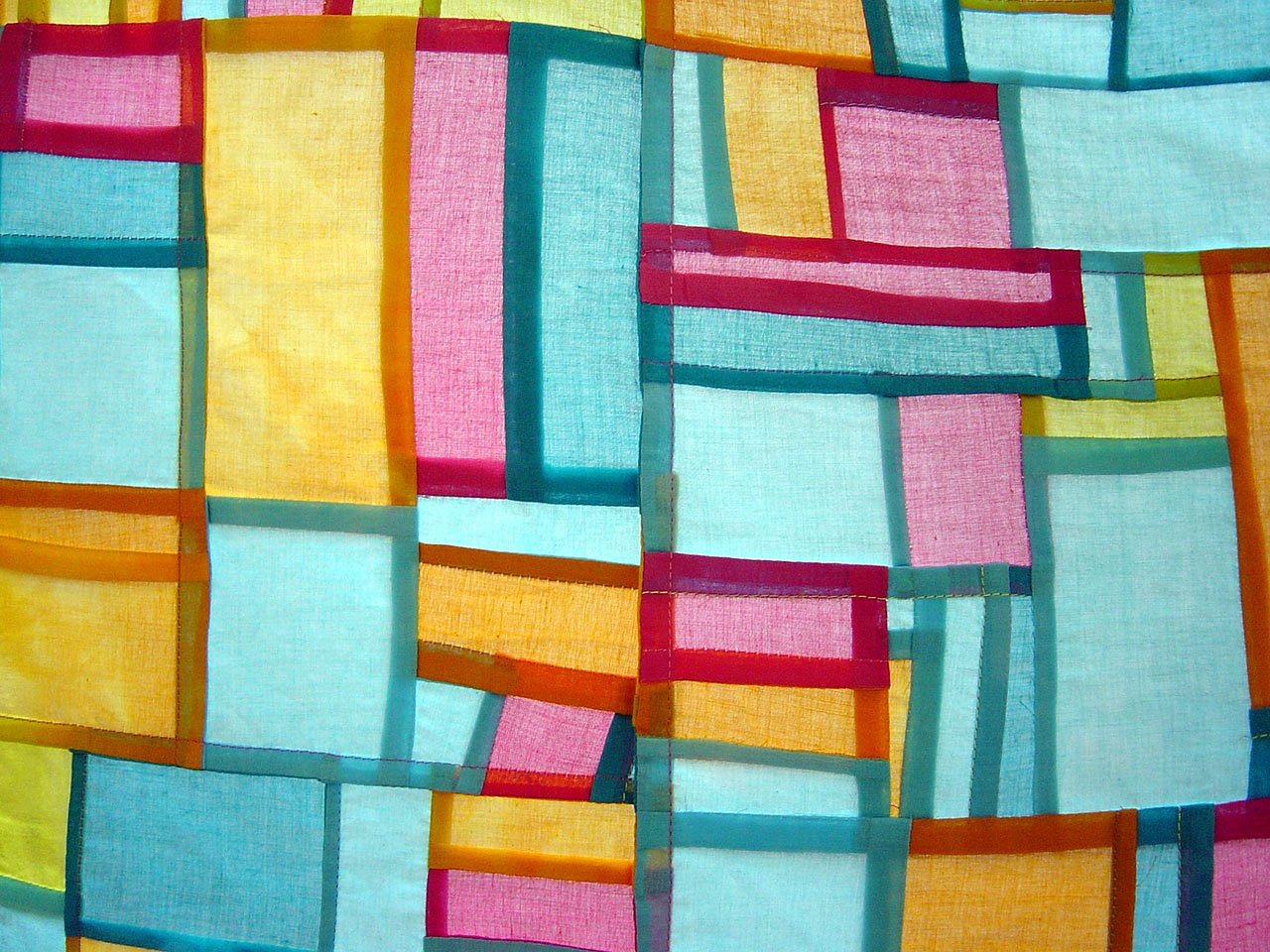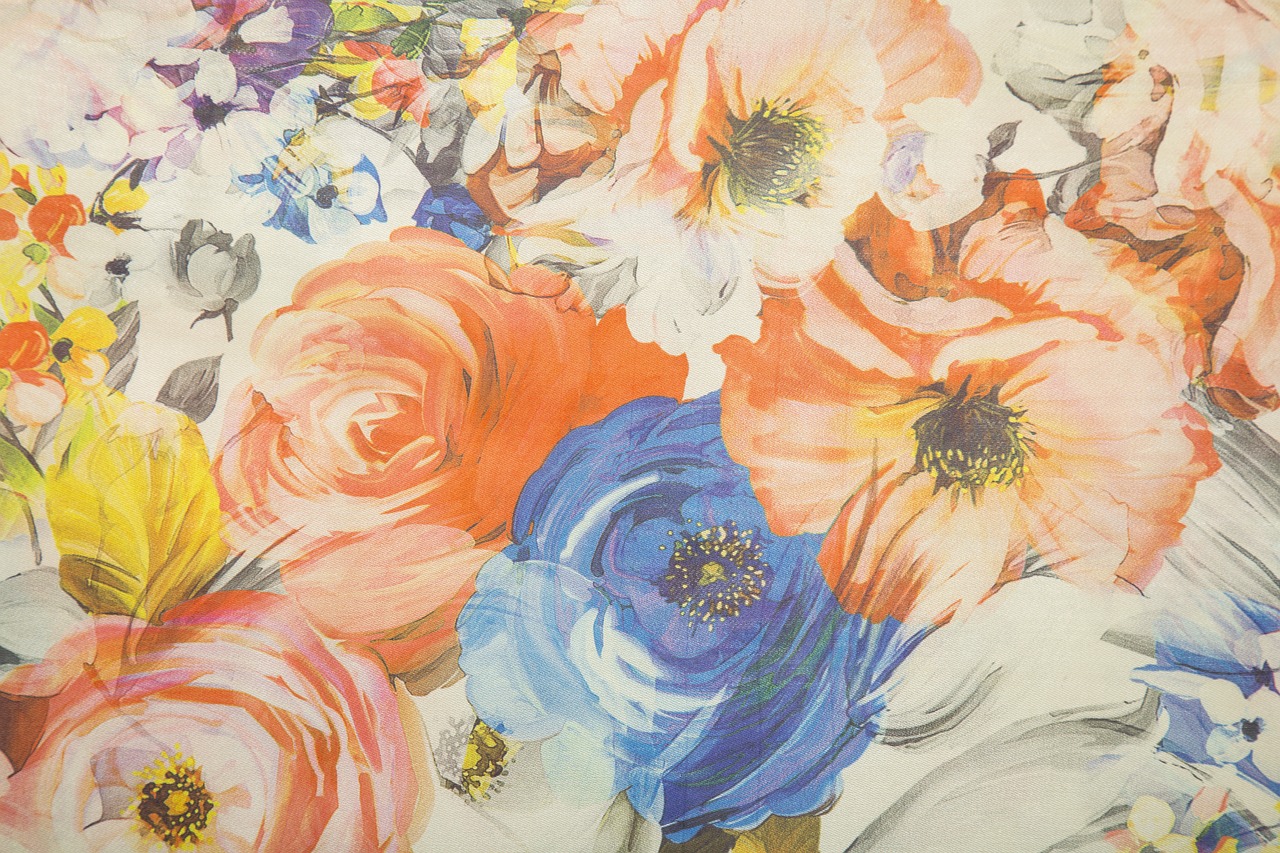Overcoming Challenges in The Art of Quilting
Quilting is more than just a hobby; it’s a passion that weaves together creativity, skill, and sometimes, a little frustration. Whether you’re a seasoned quilter or just starting out, you’ve likely faced your share of challenges. But don’t worry! Every quilter has been there, feeling the weight of a fabric choice gone wrong or struggling with a complex pattern that seems to mock your efforts. This article is your guide to navigating these obstacles, ensuring that your quilting journey is not only productive but also enjoyable.
As we dive into the world of quilting, we’ll explore common challenges that both beginners and experienced quilters encounter. From selecting the right materials to mastering techniques, you’ll find practical solutions that can enhance your skills and creativity. Remember, every challenge is an opportunity to learn and grow, so let’s embrace the art of quilting with open arms and a resilient spirit!
Quilters often encounter a variety of obstacles that can hinder their progress. These challenges can range from technical issues, like uneven seams, to more subjective struggles, such as finding inspiration. Here are some of the most prevalent issues:
- Choosing the Right Fabrics: With so many options available, selecting the right fabric can be daunting.
- Precision in Techniques: Achieving accuracy in cutting and piecing is crucial for a polished quilt.
- Staying Motivated: It’s easy to lose steam when projects don’t go as planned.
Each of these challenges can feel overwhelming, but they are also common experiences in the quilting community. Understanding that you’re not alone can provide comfort and motivation to push through.
When it comes to quilting, the materials you choose can make or break your project. Selecting appropriate fabrics and tools is crucial for successful quilting. In this section, we’ll delve into how to make informed choices that align with your project needs.
Different fabrics serve various purposes in quilting. The fabric you select can significantly affect the overall look and feel of your quilt. Here are some popular fabric types:
- Cotton: The most common fabric for quilting, known for its durability and ease of use.
- Batik: Hand-dyed fabric with unique patterns that add depth to your quilt.
- Flannel: Soft and warm, ideal for cozy quilts.
Understanding the characteristics of these fabrics will help you choose the right one for your project. For instance, while cotton is a great all-rounder, batiks can add a splash of color and texture that can elevate your design.
Batiks and cottons have distinct qualities that affect quilt outcomes. Batiks are known for their vibrant colors and intricate designs, making them a favorite for artistic quilts. On the other hand, cotton is versatile and comes in a wide range of prints and solids, making it suitable for both traditional and modern quilts. When choosing between the two, consider the style and functionality of your quilt. Do you want a striking visual impact or a classic look? This decision will guide your fabric selection.
Thread choice can significantly impact your quilt's durability and appearance. The right thread can enhance the beauty of your quilt, while the wrong one can lead to frustration. Different thread types serve various applications:
- All-purpose thread: Ideal for general quilting.
- Specialty thread: Adds texture and dimension but may require special handling.
Investing time in understanding thread types will pay off in the long run, ensuring your quilts stand the test of time.
Having the right tools can make a world of difference in your quilting journey. Essential tools for every quilter include:
- Rotary Cutter: For precise cuts.
- Quilting Ruler: Helps in measuring and cutting accurately.
- Cutting Mat: Protects your surfaces and prolongs your tools' lifespan.
These tools are not just conveniences; they are the foundation of a successful quilting project. Investing in quality tools can enhance your quilting experience, making every cut and seam a breeze.
Improving your quilting techniques can elevate your projects to new heights. Here, we explore various methods to enhance your skills and tackle complex designs with confidence. Whether you’re piecing together a simple quilt or embarking on an intricate design, mastering these techniques will make all the difference.
Precision in piecing is vital for a polished quilt. Techniques such as using a quarter-inch seam allowance and pressing seams open can help achieve accuracy. Additionally, consider investing in a good quality sewing machine that provides consistent stitch quality. Remember, practice makes perfect, so don’t be afraid to experiment!
Each quilting method offers unique benefits. Machine quilting can save time and is ideal for larger projects, while hand quilting provides a personal touch and allows for more intricate designs. Think about your project’s requirements and your personal preferences when choosing your approach.
Maintaining motivation is essential for quilters. It’s easy to feel discouraged when faced with challenges, but finding ways to stay inspired can reignite your passion. Here are some tips:
Engaging with fellow quilters can provide support and inspiration. Online forums, local quilting guilds, and social media groups are great places to share ideas, seek advice, and celebrate successes. The quilting community is filled with individuals who share your passion, making it a fantastic source of motivation.
Nature and art are rich sources of inspiration for quilters. Take a walk outside, visit a museum, or browse through art books. You’ll be amazed at how colors and patterns in the world around you can influence your quilting designs. Keep a sketchbook handy to jot down ideas as they come to you!
Q: What is the best fabric for beginners?
A: Cotton is generally the best choice for beginners due to its ease of handling and availability.
Q: How do I keep my quilting projects organized?
A: Use clear storage bins and label them by project to keep everything tidy and accessible.
Q: What should I do if I make a mistake?
A: Mistakes are part of the learning process! Assess the issue, and if possible, find a way to incorporate it into your design.

Understanding Common Quilting Challenges
Quilting is a beautiful and rewarding craft, but it’s not without its challenges. Whether you’re a seasoned quilter or just starting out, you’ll likely encounter a few bumps along the way. Understanding these common issues can help you navigate through them with ease and confidence. One of the most prevalent challenges is time management. Quilting projects can take a significant amount of time, and balancing this hobby with other responsibilities can be daunting. Have you ever found yourself overwhelmed by the thought of a large quilt project? It’s easy to feel like you’re in over your head, especially when life gets busy.
Another common hurdle is technical difficulties. From the sewing machine acting up to miscalculating measurements, these issues can be frustrating. Imagine spending hours meticulously cutting fabric, only to realize that your seams don’t align perfectly. It can feel disheartening, but remember, even the most experienced quilters have faced these challenges. A little patience and practice can go a long way!
Additionally, many quilters struggle with creative blocks. You might have all the materials and tools at your disposal, but sometimes inspiration just doesn’t strike. This can lead to feelings of frustration and stagnation in your quilting journey. What if you could break through that wall? Finding new sources of inspiration can reignite your passion for quilting and help you overcome these creative slumps.
Lastly, let’s not forget about budget constraints. Quilting can be an expensive hobby, especially if you’re drawn to high-quality fabrics and tools. It’s important to find a balance between investing in your craft and managing your finances. Many quilters face this challenge head-on by exploring cost-effective alternatives and creative solutions, such as using scraps from previous projects or participating in fabric swaps.
In summary, the challenges of quilting are diverse and can vary from person to person. However, by acknowledging these common obstacles—time management, technical difficulties, creative blocks, and budget constraints—you can better prepare yourself to tackle them. Remember, every quilter has faced these issues at some point; it’s all part of the journey. Embrace the challenges, and let them fuel your growth as a quilter!
- What are the most common challenges faced by beginner quilters? Beginners often struggle with understanding fabric types, mastering basic techniques, and managing time effectively.
- How can I improve my quilting skills? Practice is key! Additionally, consider taking classes, joining quilting groups, or watching online tutorials to enhance your skills.
- What should I do if I hit a creative block? Try stepping away from your project for a bit, seek inspiration from nature or art, or experiment with new patterns and techniques.
- How can I budget for my quilting supplies? Look for sales, use coupons, and consider buying in bulk. Also, participating in fabric swaps can be a great way to acquire new materials without breaking the bank.

Choosing the Right Materials
When it comes to quilting, the choice of materials can make or break your project. Imagine embarking on a beautiful journey, only to find that you’ve packed the wrong gear. The same principle applies here; the right fabrics and tools are your essential companions on this creative adventure. So, how do you navigate this vast sea of options? Let’s dive in!
First and foremost, understanding your project's needs is crucial. Are you crafting a cozy quilt for a chilly evening, or perhaps a vibrant wall hanging to brighten up your living space? Each project may call for different materials. For instance, if you're aiming for warmth, you might lean towards flannels or batting that provides insulation. On the other hand, if you’re looking for something lightweight and airy, cottons or blends could be your best bet.
One of the most significant aspects of material selection is the type of fabric you choose. Fabrics come in various types, each with its own personality and purpose. Here’s a brief overview of some popular fabric types:
| Fabric Type | Characteristics | Best Uses |
|---|---|---|
| Cotton | Soft, breathable, and easy to sew | General quilting, clothing, and home décor |
| Flannel | Warm, fuzzy, and cozy | Winter quilts and baby blankets |
| Batik | Vibrant colors with unique patterns | Art quilts and decorative pieces |
| Canvas | Durable and heavy-weight | Bags, outdoor quilts, and upholstery |
Now, let’s talk about the difference between batiks and cottons. Batiks are known for their rich colors and intricate designs, often created using a wax-resist dyeing technique. They can add a unique flair to your quilt but may require a bit more care when cutting and sewing due to their sometimes heavier weight. On the flip side, cotton is the go-to fabric for many quilters because of its versatility and ease of use. It’s a great starting point for beginners and a reliable choice for seasoned quilters alike.
Another aspect that can significantly influence the outcome of your quilting project is your choice of thread. The right thread can enhance the durability of your quilt while also contributing to its overall aesthetic. For example, using a high-quality cotton thread for piecing ensures that your seams hold up over time. Additionally, consider the thread weight; lighter threads are great for detailed work, while heavier threads can create a more pronounced effect on your quilting designs.
In summary, choosing the right materials is not just about picking pretty fabrics; it’s about making informed decisions that align with your quilting goals. By understanding the characteristics of various fabrics and threads, you can elevate your quilting projects and enjoy a more fulfilling creative experience. So, the next time you’re at the fabric store, remember to ask yourself: what story do I want my quilt to tell?

Fabric Types and Their Uses
When it comes to quilting, the choice of fabric is not just a matter of aesthetics; it's about functionality and suitability for your specific project. Different fabrics bring unique characteristics that can significantly influence the overall outcome of your quilt. Understanding these fabric types can empower you to make informed decisions, ensuring your quilting experience is not only enjoyable but also successful. Let's dive into the various fabric types commonly used in quilting and their best applications.
First up, we have cotton, which is the most popular fabric choice among quilters. Its versatility, durability, and ease of handling make it a go-to option for both beginners and seasoned quilters alike. Cotton fabric comes in a myriad of prints and colors, allowing for endless creativity. Whether you're making a cozy quilt for a loved one or an intricate wall hanging, cotton's breathable quality ensures comfort and longevity.
Next on the list is batik fabric, known for its vibrant colors and unique patterns. Batiks are made using a traditional wax-resist dyeing technique, resulting in a rich texture that adds depth to any quilt. The beauty of batiks lies in their ability to blend well with other fabrics, making them perfect for projects that require a pop of color or a more artistic flair. However, keep in mind that batiks can be a bit more challenging to work with due to their density, so it's essential to choose the right patterns and techniques when incorporating them into your quilts.
Another fabric worth mentioning is flannel. This soft, warm fabric is ideal for cozy quilts, especially during the colder months. Flannel is often used for baby quilts or lap quilts because of its gentle texture, making it comfortable against the skin. However, be cautious when mixing flannel with other fabric types, as it can stretch differently and may require special handling during the piecing process.
For those looking for something a bit different, there are also satin and silk fabrics. These luxurious materials can elevate your quilting projects, adding a touch of elegance and sophistication. However, they can be slippery and challenging to sew, so it's crucial to use the right techniques and tools to avoid frustration. If you're aiming for a quilt that stands out during special occasions or events, satin and silk might just be the perfect choice.
Lastly, let’s not overlook denim and canvas. These sturdy fabrics are fantastic for creating quilts that need to withstand wear and tear, such as picnic blankets or outdoor quilts. Their durability makes them an excellent choice for projects that will see a lot of use, but they can be heavier and more challenging to sew. It's essential to use a strong needle and ensure your sewing machine is equipped to handle thicker fabrics.
In summary, the choice of fabric can make or break your quilting project. Understanding the characteristics and appropriate uses of each fabric type is key to achieving the desired results. Here’s a quick reference table summarizing the various fabric types and their ideal uses:
| Fabric Type | Characteristics | Best Uses |
|---|---|---|
| Cotton | Versatile, durable, easy to handle | General quilting, clothing, home decor |
| Batik | Vibrant colors, unique patterns | Artistic quilts, blending with other fabrics |
| Flannel | Soft, warm, gentle texture | Cozy quilts, baby quilts |
| Satin/Silk | Luxurious, elegant, slippery | Special occasion quilts |
| Denim/Canvas | Sturdy, durable, heavier | Outdoor quilts, picnic blankets |
By understanding the various fabric types and their uses, you can approach your quilting projects with confidence, creativity, and a clear vision. So, next time you step into a fabric store or browse online, keep these insights in mind to choose the perfect fabric that aligns with your quilting goals!
- What is the best fabric for beginners? Cotton is generally recommended for beginners due to its ease of handling and wide availability.
- Can I mix different fabric types in one quilt? Yes, you can mix fabric types, but be mindful of their different characteristics, such as weight and stretch.
- How do I choose the right thread for my fabric? Always choose a thread that matches the weight of your fabric. For cotton fabrics, a cotton thread is usually the best choice.
- Is it necessary to pre-wash fabric before quilting? Pre-washing can prevent shrinking and color bleeding, so it’s a good practice, especially for fabrics that may bleed.

Understanding Batiks vs. Cottons
When it comes to quilting, the choice of fabric can make or break your project. Among the myriad of fabric options available, batiks and cottons are two of the most popular choices among quilters. But what sets them apart? Understanding the unique characteristics of each can help you make informed decisions that align with your quilting style and project needs.
Batiks are a type of fabric that originates from Indonesia, known for their vibrant colors and intricate patterns. The process of creating batik involves a wax-resist dyeing technique, which results in a unique, textured look. This method allows for a wide range of colors and designs, making batiks particularly appealing for quilts that aim to stand out. However, because of their unique dyeing process, batiks can sometimes be more challenging to work with. The wax can create a slightly stiff texture, which may require adjustments in your quilting technique.
On the other hand, cotton fabrics are the go-to choice for many quilters. They are widely available, come in a vast array of colors and prints, and are generally easier to sew. Cotton is breathable, durable, and has a soft feel, making it comfortable for quilts that will be used frequently. The versatility of cotton makes it suitable for various quilting styles, from traditional to modern. However, the downside is that cotton fabrics may not always provide the same level of vibrancy and depth of color as batiks, especially if you're aiming for a more dynamic visual effect.
To help you better understand the differences, here’s a quick comparison:
| Feature | Batiks | Cottons |
|---|---|---|
| Origin | Indonesia | Global |
| Dyeing Process | Wax-resist technique | Variety of dyeing methods |
| Texture | Textured, sometimes stiff | Soft and smooth |
| Color Vibrancy | High vibrancy | Varies |
| Ease of Use | Moderate difficulty | Easy |
In conclusion, the choice between batiks and cottons ultimately depends on your project goals and personal preferences. If you're looking for a fabric that offers bold colors and unique patterns, batiks may be the way to go. However, if you prefer something that's easy to work with and widely available, cotton fabrics are a reliable choice. Remember, experimenting with both types can also lead to stunning results, allowing you to blend the best of both worlds in your quilting projects!

Importance of Thread Selection
When it comes to quilting, one might think that fabric is the star of the show, but let me tell you, thread selection plays a crucial supporting role that can make or break your quilt. Just like a great performance needs a solid script, a beautiful quilt needs the right thread to bring it all together. Choosing the right thread isn’t just about aesthetics; it also impacts the durability and overall appearance of your finished piece. Imagine spending hours piecing together a stunning quilt, only to have the thread unravel or fade after a few washes. That’s a nightmare no quilter wants to face!
So, what should you consider when selecting your thread? First, think about the fiber content. Threads come in various materials, such as cotton, polyester, and silk, each offering different benefits. For example, cotton threads are widely loved for their natural feel and ability to blend seamlessly with cotton fabrics. However, if you're looking for something that can withstand wear and tear, polyester might be your best bet. It’s strong, resistant to fraying, and holds up well against the elements.
Next, consider the weight of the thread. Thread weight can significantly influence the look of your quilt. Heavier threads, like those used for quilting, can add texture and dimension, while lighter threads are perfect for delicate piecing. A common choice for quilting is the 40-weight thread, which strikes a balance between strength and subtlety. But don't be afraid to experiment! Sometimes a little surprise can lead to a stunning effect.
Additionally, thread color is another vital factor. You might be tempted to match your thread to your fabric perfectly, but don’t overlook the beauty of contrast. A contrasting thread can highlight specific areas of your quilt, adding depth and interest. Think of it like the icing on a cake; it can elevate the entire experience! Just remember to choose wisely, as the wrong color can detract from your hard work.
To help you navigate the world of thread selection, here’s a quick comparison table of common thread types:
| Thread Type | Material | Best Use |
|---|---|---|
| Cotton | 100% Cotton | Piecing, Quilting |
| Polyester | 100% Polyester | Quilting, General Sewing |
| Silk | 100% Silk | Delicate Work, Embroidery |
| Rayon | Rayon Blend | Decorative Stitching |
In conclusion, thread selection is a key component of your quilting journey that shouldn’t be underestimated. By choosing the right type, weight, and color of thread, you can ensure that your quilt not only looks fantastic but also stands the test of time. So next time you’re at the fabric store, take a moment to consider your options. Your quilt will thank you!
- What is the best thread for quilting? The best thread for quilting often depends on your fabric choice and desired outcome, but cotton and polyester are popular choices.
- Can I use regular sewing thread for quilting? While you can use regular sewing thread, it’s recommended to use thread specifically designed for quilting for better durability and performance.
- How do I choose the right thread color? Consider contrasting colors to add interest, or match your thread to your fabric for a more blended look.

Essential Quilting Tools
When it comes to quilting, having the right tools can make all the difference between a frustrating experience and a delightful one. Imagine trying to bake a cake without the proper measuring cups or mixing bowls; quilting is no different! The tools you choose can enhance your creativity, improve your precision, and ultimately lead to a more enjoyable quilting journey. So, what are the essential tools every quilter should have in their arsenal?
First and foremost, a rotary cutter is an absolute must. This handy tool slices through fabric with ease, allowing for clean and precise cuts. Pair it with a self-healing cutting mat to protect your surfaces and prolong the life of your blades. You might be wondering, "How do I know which size rotary cutter to choose?" Generally, a 45mm rotary cutter is versatile enough for most quilting projects, but if you're working with smaller pieces, consider a 28mm cutter for better maneuverability.
Next up is the quilt ruler. This transparent tool is your best friend when it comes to measuring and cutting your fabric accurately. Look for a ruler that has clear markings and a non-slip backing to keep it in place while you cut. For beginners, a 6” x 24” ruler is a great starting point, as it can handle a variety of fabric widths. You might also want to invest in a square ruler for squaring up blocks and ensuring everything is aligned perfectly.
Another essential tool is the sewing machine. While some quilters prefer hand sewing, having a reliable machine can speed up the process and allow for more intricate designs. When selecting a sewing machine, consider features like stitch options, ease of use, and whether it can handle multiple layers of fabric. Don't forget to equip your machine with the right needles! A universal needle works for most quilting projects, but you may want to have a few specialty needles on hand for specific fabrics.
Let’s not overlook the importance of pins and clips. While pins have been a quilter's staple for decades, many quilters now prefer using clips for thicker layers or when working with delicate fabrics. They hold layers securely without damaging the material, making them a fantastic alternative. For those who still love pins, opt for quilting pins that are longer and sturdier to handle multiple layers.
Lastly, a seam ripper may not be the most glamorous tool, but trust us, it’s essential! Mistakes happen, and having a seam ripper on hand means you can quickly rectify any errors without damaging your fabric. Think of it as your safety net; it allows you to take risks in your quilting without the fear of making irreversible mistakes.
In summary, the right tools can transform your quilting experience from daunting to delightful. Here’s a quick recap of the essential quilting tools:
| Tool | Purpose |
|---|---|
| Rotary Cutter | For precise fabric cuts |
| Cutting Mat | Protects surfaces and prolongs blade life |
| Quilt Ruler | For accurate measuring and cutting |
| Sewing Machine | Speeds up the quilting process |
| Pins and Clips | Holds layers of fabric together |
| Seam Ripper | Fixes mistakes without damage |
With these tools in your quilting toolkit, you’ll be well on your way to creating beautiful quilts that showcase your unique style and creativity. So, gather your supplies, unleash your imagination, and let the quilting adventure begin!
- What is the best fabric for beginners? Cotton is generally recommended for beginners due to its ease of use and availability.
- How do I choose the right thread? Opt for 100% cotton thread for quilting projects, as it complements cotton fabrics well.
- Can I quilt without a sewing machine? Yes! Hand quilting is a traditional method that many quilters enjoy.
- What are some common quilting mistakes? Misaligned seams and incorrect fabric cuts are common mistakes, but they can be fixed with practice.

Mastering Quilting Techniques
Quilting is not just a hobby; it’s a journey of creativity, patience, and mastery. As you dive deeper into the world of quilting, you'll discover that improving your techniques can significantly elevate your projects. Whether you're a seasoned quilter or just starting, honing your skills is essential. So, how do you go from simple squares to stunning designs that make your heart flutter? Let's explore various methods that can help you tackle complex patterns with confidence.
One of the first aspects to consider is precision in piecing. Imagine putting together a jigsaw puzzle; every piece must fit perfectly for the final picture to come together. In quilting, the same principle applies. Accurate cuts and seams are crucial to achieving a polished quilt. Techniques such as using a rotary cutter instead of scissors can drastically improve your cutting accuracy. Moreover, when piecing your quilt, always remember to use a quarter-inch seam allowance. This small detail can make a huge difference in how your quilt lays out in the end.
Next, let's talk about the age-old debate: machine vs. hand quilting. Each method has its unique charm and benefits. Hand quilting is often seen as a labor of love, allowing you to connect with your quilt on a personal level. It can be meditative, providing a sense of calm as you stitch each square. However, machine quilting can save you time and is perfect for tackling larger projects. The decision ultimately boils down to your personal preference and the type of quilt you’re creating. If you’re looking for speed and efficiency, machine quilting may be your best bet. On the other hand, if you want to savor the process and enjoy the tactile experience, hand quilting could be the way to go.
To help you better understand these techniques, let’s break down some essential quilting methods in the table below:
| Technique | Description | Best For |
|---|---|---|
| Precision Piecing | Using accurate cuts and a consistent seam allowance for perfect alignment. | All skill levels |
| Machine Quilting | Utilizing a sewing machine for faster completion of quilts. | Large projects, time-saving |
| Hand Quilting | Stitching by hand for a personal touch and traditional feel. | Smaller projects, detailed work |
As you master these techniques, don't forget to experiment. Quilting is as much about creativity as it is about skill. Try combining different methods to find what works best for you. For instance, you might start with machine piecing for speed and then switch to hand quilting for the finishing touches. This blend can create a quilt that is uniquely yours, showcasing your personality and style.
Lastly, staying motivated is key to mastering any craft, including quilting. Set small, achievable goals for each project, and celebrate your progress along the way. Remember, every quilter was once a beginner, and each stitch brings you closer to mastery. So grab your fabric, thread, and tools, and let your quilting journey unfold!
- What is the best fabric for beginners? Cotton is highly recommended for beginners due to its ease of use and availability.
- How can I improve my stitching? Practice regularly and consider taking a class to learn new techniques.
- What tools do I need to start quilting? At a minimum, you'll need a rotary cutter, cutting mat, quilting ruler, and sewing machine.

Piecing Techniques for Precision
When it comes to quilting, precision is key. Imagine constructing a beautiful quilt like building a sturdy house; if the foundation isn’t solid, the entire structure is at risk. The same goes for quilting—every piece must fit together perfectly to create a cohesive design. Here, we’ll explore some essential techniques that can help you achieve that much-desired accuracy in your piecing.
First and foremost, it’s crucial to start with accurate cutting. Using a rotary cutter and a self-healing mat can significantly enhance your cutting precision. Ensure that your ruler is aligned correctly before making each cut. Even a slight miscalculation can lead to mismatched seams. Also, consider using a square ruler for squaring up your fabric pieces. This will help you maintain the right angles and dimensions, setting a solid foundation for your quilt.
Next, let’s talk about the importance of seam allowances. A standard seam allowance is typically ¼ inch, but it’s essential to be consistent. Use a seam guide on your sewing machine to ensure that every seam you sew is the same width. This consistency will prevent any discrepancies in your quilt’s overall appearance. If you’re using a different seam allowance for a specific pattern, make sure to adjust your cutting accordingly.
Another technique to enhance precision is to press your seams correctly. Many quilters overlook this step, but pressing can make a world of difference. Pressing your seams open can reduce bulk and help your pieces lay flat, while pressing to one side can help with alignment when matching seams. Experiment with both methods to see which works best for your project. Remember, a well-pressed seam can be the difference between a good quilt and a great one!
Additionally, consider using chain piecing as a method to increase efficiency and accuracy. This technique allows you to sew multiple pieces of fabric together in a continuous chain, which not only saves time but also helps maintain uniformity in your stitching. Just be sure to cut your pieces apart carefully to avoid any fabric distortion.
Lastly, always take the time to measure twice and cut once. This old adage rings true in quilting as it does in carpentry. Before you make any cuts, double-check your measurements against your pattern. It’s a simple step that can save you from costly mistakes down the line.
In summary, achieving precision in quilting isn’t just about the tools you use; it’s about the techniques you employ. By focusing on accurate cutting, maintaining consistent seam allowances, pressing correctly, utilizing chain piecing, and measuring diligently, you can elevate your quilting game to new heights. Remember, every small detail contributes to the overall beauty of your quilt, so embrace these techniques and watch your skills flourish!
- What is the best way to cut fabric for quilting? Using a rotary cutter and a ruler on a self-healing mat is the most effective method for cutting fabric accurately.
- How important is seam allowance in quilting? Seam allowance is crucial; a consistent ¼ inch is standard for most quilting projects to ensure pieces fit together correctly.
- What is chain piecing? Chain piecing is a technique where multiple pieces are sewn together in a continuous chain, increasing efficiency and maintaining uniformity in stitching.
- Should I press seams open or to one side? It depends on your project; pressing seams open can reduce bulk, while pressing to one side can help with alignment.

Machine vs. Hand Quilting
When it comes to quilting, one of the most debated topics among enthusiasts is the choice between machine quilting and hand quilting. Each method has its own unique charm and set of advantages, making the decision more about personal preference than a definitive right or wrong. For instance, machine quilting is often praised for its speed and efficiency. If you're working on a large project or have a tight deadline, using a sewing machine can save you hours of labor. The precision of modern machines allows for intricate designs that might be challenging to replicate by hand. Plus, with the right machine settings, you can achieve a consistent stitch length, which is crucial for a polished finish.
On the flip side, hand quilting is often viewed as a more traditional and artistic approach. Many quilters find the process meditative and enjoy the tactile experience of working with fabric and thread. Hand quilting allows for more creative freedom; you can easily adjust your stitches and patterns as you go, which can lead to unique results that reflect your personal style. Additionally, some quilters believe that hand-quilted projects carry a certain warmth and character that machine quilting simply can't replicate.
To help you weigh the pros and cons, here’s a quick comparison:
| Criteria | Machine Quilting | Hand Quilting |
|---|---|---|
| Speed | Fast and efficient | Time-consuming |
| Precision | Consistent stitch length | Variable but customizable |
| Creativity | Limited by machine capabilities | Highly creative and flexible |
| Physical Demand | Less physically demanding | More physically engaging |
| Final Texture | Smoother finish | Textured and cozy finish |
Ultimately, the choice between machine and hand quilting comes down to your personal style and the specific project at hand. Some quilters even choose to combine both methods, using machine quilting for the majority of the work and finishing with hand quilting for added detail and texture. This hybrid approach allows you to enjoy the benefits of both worlds, creating quilts that are not only beautiful but also uniquely yours.
So, whether you're racing against the clock with your sewing machine or savoring every stitch by hand, remember that quilting is about expressing your creativity and enjoying the process. Embrace whichever method speaks to you, and let your quilts tell your story.
- Can I combine machine and hand quilting? Yes! Many quilters use a combination of both methods to achieve unique results.
- Which method is better for beginners? Machine quilting may be easier for beginners due to its speed, but hand quilting can also be a great way to learn the basics.
- What tools do I need for each method? For machine quilting, a sewing machine and rotary cutter are essential. For hand quilting, you'll need a needle, thread, and thimble.

Staying Motivated and Inspired
Quilting is not just a hobby; it’s a journey filled with creativity, expression, and sometimes, frustration. Staying motivated can be a challenge, especially when you hit a snag or feel uninspired. So, how do you keep that quilting fire burning brightly? One of the best ways is to immerse yourself in the quilting community. Engaging with fellow quilters can provide not just support but also a wealth of inspiration. Imagine sharing your struggles and successes with someone who truly understands the ups and downs of quilting. Whether it’s through local quilting guilds or online forums, connecting with others can reinvigorate your passion.
Another fantastic source of motivation is to draw inspiration from the world around you. Nature, for instance, is a treasure trove of colors and patterns. Have you ever taken a moment to observe the intricate designs of leaves or the vibrant hues of a sunset? These natural wonders can spark ideas for your next quilting project. You might find yourself wanting to replicate the soft greens of a forest or the bold reds of a sunset in your fabric choices. The key is to keep your eyes open and your mind receptive to these influences.
Additionally, setting small, achievable goals can help maintain your motivation. Instead of overwhelming yourself with the idea of completing an entire quilt, focus on one block at a time. Celebrate each small victory! This not only makes the process less daunting but also gives you a sense of accomplishment that keeps you moving forward. You can also keep a journal of your quilting journey—documenting your ideas, progress, and even the challenges you face. This reflection can be incredibly motivating, as it allows you to see how far you’ve come and what you’ve learned along the way.
To further enhance your motivation, consider creating a dedicated quilting space that reflects your style and inspires creativity. Surround yourself with beautiful fabrics, inspirational quotes, and tools that make you excited to quilt. A well-organized, inviting space can transform your quilting experience, making it easier to dive into your projects whenever inspiration strikes. Don't forget to take breaks and step away when needed; sometimes, the best ideas come when you’re not actively trying to create.
Lastly, attending quilting workshops or classes can reignite your passion. Learning new techniques or working on a project with others can provide a fresh perspective and new ideas. Plus, you’ll leave with a sense of accomplishment and perhaps a new friend or two! Remember, the quilting journey is as much about the process as it is about the finished product. Embrace the challenges, stay curious, and keep creating!
- How can I find local quilting groups? Start by checking community centers, fabric stores, or social media platforms. Many quilters share their experiences and organize meet-ups online.
- What should I do if I feel stuck on a project? Take a break! Step away for a bit, or try working on a different project. Sometimes, a fresh perspective is all you need.
- How do I choose colors that inspire me? Look to nature, art, or even your wardrobe for color inspiration. Creating a mood board can also help visualize your ideas.

Joining Quilting Communities
One of the most rewarding aspects of quilting is the sense of community that surrounds it. When you join quilting communities, whether online or in-person, you open yourself up to a world of support, inspiration, and shared knowledge. Think of it as a cozy quilt made up of diverse patches, each contributing its own unique color and texture. By connecting with fellow quilters, you not only enhance your skills but also forge lasting friendships that can make your quilting journey even more enjoyable.
In quilting communities, you can share your projects, seek advice, and even collaborate on larger works. Imagine having a group of friends who understand your passion and can provide feedback on your designs or techniques. This kind of interaction can be a game-changer, especially when you hit a creative roadblock. Plus, you can learn new techniques and discover fresh ideas that you may not have encountered on your own. The collective wisdom of a quilting community is invaluable!
Many quilters find that participating in local quilting groups or guilds offers a fantastic way to meet like-minded individuals. These gatherings often feature workshops, guest speakers, and even quilting retreats. Here’s a quick look at some of the benefits of joining such communities:
- Networking Opportunities: Meet quilters of all skill levels, from beginners to seasoned pros.
- Workshops and Classes: Gain access to exclusive learning experiences to sharpen your skills.
- Emotional Support: Share your quilting struggles and triumphs with people who truly understand.
- Inspiration: Discover new patterns, techniques, and ideas that can spark your creativity.
For those who prefer digital interaction, online quilting forums and social media groups can be just as fulfilling. Platforms like Facebook, Instagram, and dedicated quilting websites offer spaces where you can post pictures of your work, ask questions, and participate in challenges. These communities often host virtual quilt-alongs, where members work on the same project simultaneously, creating a shared experience that transcends geographical boundaries.
To get started, consider searching for local quilting guilds or online forums that resonate with your interests. Many of these groups welcome newcomers with open arms, so don’t be shy! Dive into discussions, ask questions, and share your progress. You might be surprised by how quickly you feel at home.
In conclusion, joining quilting communities is not just about enhancing your skills; it's about building connections that enrich your quilting experience. So, grab your fabric, connect with fellow quilters, and let the magic of community elevate your passion for quilting!
1. How do I find a local quilting group?
You can start by checking community bulletin boards, local craft stores, or online platforms like Meetup.com. Many quilting guilds have websites or social media pages where you can learn about their meetings and activities.
2. Are online quilting communities as effective as in-person ones?
Absolutely! Online communities can offer vast resources and connections. You can engage with quilters from around the world, participate in discussions, and share your work without geographical limitations.
3. What should I expect when joining a quilting community?
Expect a warm welcome! Most quilting communities are supportive and eager to help newcomers. You can participate in discussions, workshops, and events that cater to all skill levels.
4. Can I start my own quilting group?
Yes! If you can't find a group that fits your needs, consider starting your own. Gather a few friends or advertise locally to find others interested in quilting.

Finding Inspiration in Nature and Art
When it comes to quilting, inspiration can strike from the most unexpected places. Nature and art are two of the richest sources of creativity for quilters. Think about it: the vibrant colors of a sunset, the intricate patterns found in leaves, or the bold strokes of a painting can all ignite that creative spark. Have you ever walked through a garden and noticed how the flowers seem to dance in the breeze, creating a natural quilt of colors and textures? This is the beauty of nature; it offers a palette that is both diverse and harmonious, just waiting to be translated into fabric.
One of the best ways to draw inspiration from nature is to take a walk or spend time outdoors. Keep your eyes peeled for interesting shapes and color combinations. Perhaps the way the sunlight filters through the trees could inspire a new quilt design, or the gradient of colors in a sunset might guide your fabric choices. You might even consider taking photographs of your favorite scenes to reference later when you're ready to create. Nature is a living canvas, and every season brings a new opportunity for inspiration.
Art, on the other hand, offers a different kind of stimulation. Visiting galleries or exploring online art platforms can expose you to various styles and techniques that could influence your quilting. For instance, the abstract patterns of modern art can inspire you to experiment with geometric shapes in your quilts. Similarly, traditional artworks may encourage you to incorporate historical motifs or color schemes into your projects. The beauty of art lies in its ability to evoke emotions; let that passion flow into your quilting.
To help you get started, here are some tips on how to find inspiration in nature and art:
- Keep a Sketchbook: Jot down ideas, sketches, or color palettes that resonate with you during your explorations.
- Collect Natural Elements: Gather leaves, flowers, or stones that inspire you and use them as references for colors and shapes.
- Explore Art Styles: Research different art movements, such as Impressionism or Cubism, and think about how their characteristics could translate into fabric.
- Attend Workshops: Join classes that focus on nature-inspired quilting or art quilting, where you can learn new techniques and share ideas with others.
Ultimately, the key to finding inspiration is to remain open and curious. Both nature and art are constantly evolving, and so should your quilting practice. By immersing yourself in the world around you, you’ll not only enhance your skills but also discover new avenues of creativity that can transform your quilting projects into breathtaking works of art.
Q: How can I incorporate nature into my quilting projects?
A: You can incorporate nature by using colors and patterns inspired by the outdoors, such as floral prints or earthy tones. Additionally, consider using natural elements as motifs in your quilt designs.
Q: Where can I find art that inspires me?
A: Local galleries, museums, and online platforms like Pinterest or Instagram are great places to discover art that resonates with you. Look for artists whose styles you admire and think about how their work could influence your quilting.
Q: What if I struggle to find inspiration?
A: It’s normal to experience creative blocks. Try changing your environment, exploring new hobbies, or even taking a break. Sometimes, stepping away can help refresh your perspective.
Frequently Asked Questions
- What are some common challenges faced by beginner quilters?
Beginner quilters often struggle with issues like selecting the right fabrics, understanding quilting terminology, and mastering basic techniques. It can be overwhelming to choose the right tools and materials, but with practice and guidance, these challenges can be overcome.
- How do I choose the best fabric for my quilting project?
Choosing the right fabric involves considering the project’s purpose, the desired texture, and the overall aesthetic. Cotton is a popular choice due to its versatility and ease of use, while batiks offer vibrant colors and unique patterns. Always feel the fabric and ensure it aligns with your quilting goals!
- What tools are essential for quilting?
Every quilter should have a few key tools, including a rotary cutter, cutting mat, quilting ruler, and pins. These tools are vital for making precise cuts and ensuring your pieces fit together perfectly. Investing in quality tools can make your quilting experience much smoother!
- Should I choose machine quilting or hand quilting?
The choice between machine and hand quilting depends on your personal preference and the type of project. Machine quilting is generally faster and great for larger quilts, while hand quilting allows for more intricate designs and a personal touch. Try both methods to see which one you enjoy more!
- How can I stay motivated when quilting?
Staying motivated can be tricky, especially when faced with challenges. Joining quilting communities, whether online or in-person, can provide inspiration and support. Additionally, setting small goals and celebrating your progress can keep your passion alive!
- Where can I find inspiration for my quilting projects?
Inspiration can be found everywhere! Nature, art, and even everyday objects can spark creative ideas. Don't hesitate to explore different sources—take a walk outside, visit a museum, or browse through quilting magazines to ignite your imagination!



















